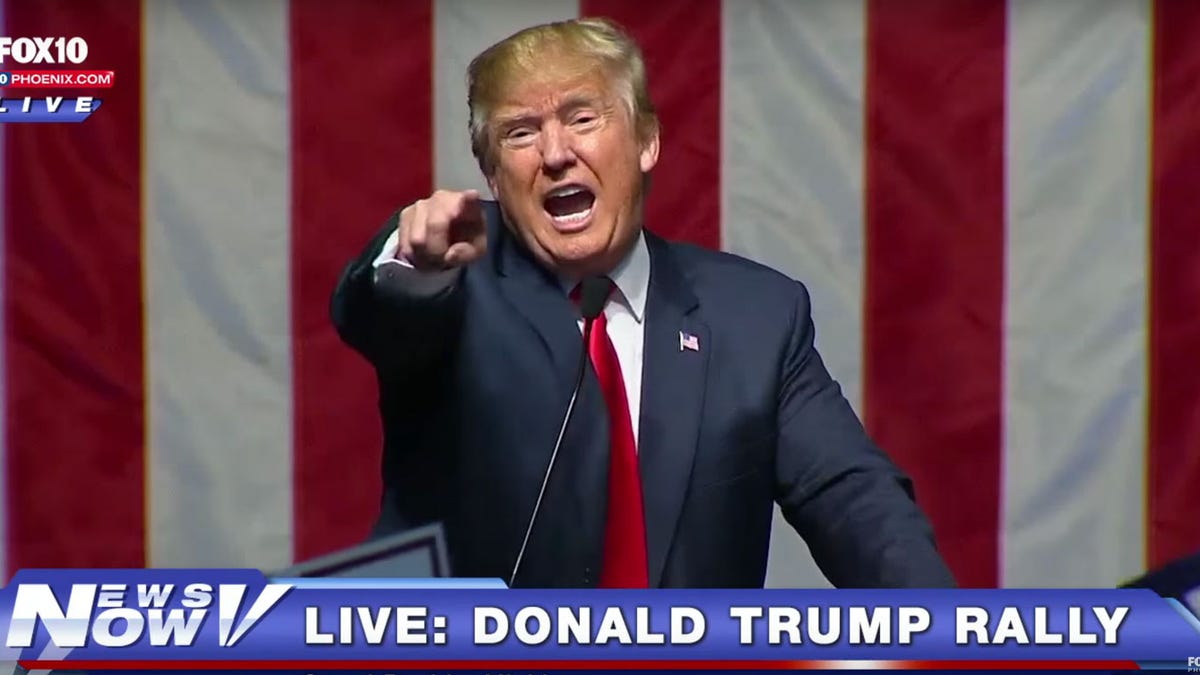Drumpf Twitterbot learns to imitate Trump via deep-learning algorithm
Presidential candidate Donald Trump gets the Recurrent Neural Network treatment as a bot tweets what it thinks he may say based on his speeches.
Sometimes politicians say things they wish they could take back, especially online. And in other cases, their words become the kind of fodder comedians dream of for the perfectly hilarious monologue.
But what happens when you have a presidential candidate whose speeches almost sound like an absurdist bot run amok?
Republican presidential candidate Donald Trump has already been the subject of numerous news articles due to his call to boycott Apple and for shaming President Barack Obama for watching "Star Wars."
Trump's sound bites are often so memorable that even remix master Eclectic Method made an entertaining music video showcasing his best comments.
So it's no surprise that the controversial presidential candidate now has a bot that mimics his speech based on his real-life comments.
The Twitterbot DeepDrumpf takes its name from "Last Week Tonight" host and comedian John Oliver who lambasted Trump on his February 28 show when he revealed the politician's original family name is actually Drumpf -- encouraging the hashtag #MakeDonaldDrumpfAgain.
The Trump Twitterbot was created by MIT Computer Science and Artificial Intelligence Lab (CSAIL) postdoc candidate Bradley Hayes, who used artificial intelligence deep learning techniques such as neural networks that teach computers to find various patterns in data.
"Trump's language tends to be more simplistic, so I figured that, as a modeling problem, he would be the most manageable candidate to study," Hayes said on the CSAIL blog.
DeepDrumpf takes the information it's given then tweets what it thinks Trump would say in real life. So far, DeepDrumpf tweeting "I'm what ISIS doesn't need," sounds very plausible.
These Donald Trump meme contest entries will make your day great again (pictures)
See all photos"The bot creates Tweets one letter at a time," according to the CSAIL blog. "If the bot randomly begins its Tweet with the letter M, it is somewhat likely to be followed by an A, and then a K, and so on until the bot types out Trump's campaign slogan, 'Make America Great Again.' It then starts over for the next sentence and repeats the process until it reaches the 140-character limit."
Of course, as with all text-based bots, DeepDrumpf doesn't always make much sense, but critics say that in some cases, neither does the real-life Trump -- and that's why the bot is so much fun to follow. It's always a challenge to separate the real comments from the AI.
The bot also chats with Trump's actual Twitter account @realDonaldTrump, which reads like the candidate having a rather odd conversation with himself.
While it's easy to poke fun at Trump, he is in no way the only presidential candidate that Hayes has his sights on bot-ifying. There could also be Twitter speech bots in the works for other candidates like Bernie Sanders and Hillary Clinton in the near future.


